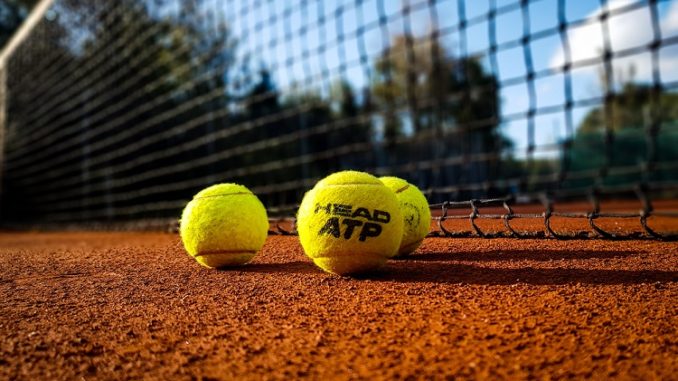
Are you someone who loves playing tennis? If yes, finding the right equipment to play the game can make all the difference. The tennis ball you are using to play can have a huge impact on the outcome of your game. Especially if you care about winning the game, you should prioritise choosing the best tennis ball.
But do you have adequate knowledge about a tennis ball? Do you know the properties a tennis ball should have and how to choose the best one? If you are someone who becomes clueless after visiting a tennis shop online, this article is for you.
Features of Tennis Balls
A tennis ball has various features that make them suitable for the game. For instance, tennis balls are either white or yellow. Most tennis balls are in the fluorescent yellow shade, which is called optic yellow. But the three main physical properties of a tennis ball are as follows:
Size
A tennis ball should have a diameter of 2.57 inches to 2.70 inches. The appropriate weight of a tennis ball is between 1.975 ounces to 2.095 ounces. These strict standards of tennis balls are followed in ITF (International Tennis Federation) tournaments and even in amateur competitions. It ensures that the performance form of all players is uniform across tournaments.
Bounce
The typical bounce of a tennis ball should be 53-58% of the dropping height on a concrete surface. If you are dropping the ball from 1m, the ball should bounce up 53-58 cm. Any ball that doesn’t meet this requirement is not suitable for the game of tennis.
While playing, a tennis ball comes in contact with the rackets of the players and also the floor. It results in a decrease in the bounce level of the balls. The organising committee doesn’t measure the bounce of the balls during the match. But players are able to feel the bounce decreasing.
Deformation
The forward and return deformation of a tennis ball is taken into account to decide whether it’s suitable for the game. Everyone should know that the deformation is checked during the production and not while playing.
According to the ITF, there’s a standard range within which the tennis ball’s diameter can vary while coming in contact with the rackets and floors. The range of forward deformation for all types of tennis balls is 0.220 inches to 0.291 inches.
The range of return deformation for tennis balls used on fast surfaces like the grass is 0.291 inches to 0.425 inches. The range of return deformation for all other types of tennis balls is 0.135 to 0.425 inches.
Types of Tennis Balls
Tennis balls can be categorised into different types on the basis of a particular factor. For instance, there are various types of beginner tennis balls, such as Penn tennis balls and tourna mesh carry tennis balls. Tennis balls are also manufactured depending on the players’ level of expertise.
But one popular factor in dividing tennis balls into different categories includes the surface on which the game is played. The four types of tennis balls, depending on the surface of the game, are as follows:
Regular duty tennis balls:
These are soft court tennis balls usually suitable for clay courts. Clay courts are generally considered slow courts. Therefore, the balls travel slowly and absorb a lot of clay in the process. The clay absorbed by the balls makes them quite heavy. The felt is thin and tightly woven around the core of the regular duty balls. It ensures that the tennis balls don’t lose their integrity.
Extra duty tennis balls:
These tennis balls are perfect for a game on outdoor hard courts. Extra duty tennis balls have more wool on them. It ensures that the extra duty tennis balls are durable for a long time.
Grass court tennis balls:
These balls are quite similar to the regular duty tennis balls. But they are manufactured with additional stain-resistant treatment. It ensures that grass stains don’t lead to changes in the colour of the balls.
High altitude tennis balls:
These balls are specifically manufactured to play in high altitudes. The balls are suitable in altitudes of 4,000 feet and above. At such high altitudes, normal balls are seen flying.
How to Buy the Best Tennis Ball?
Choosing the right tennis ball can be a daunting task if you don’t know the essential attributes to consider. The attributes of a tennis ball that you need to consider before buying are as follows:
Brand
You will come across numerous well-known brands that manufacture tennis balls. For instance, you will find Dunlop, Penn, Slazenger and Wilson manufacturing different types of tennis balls. You should choose a premium tennis ball brand as it will have a huge impact on improving your game.
Quality
Tennis balls are manufactured to meet different quality requirements, which include the following:
Professional:
If you are an expert at the game, invest in professional tennis balls. It will ensure that you have better control, power and precision.
Championship:
If you have played tennis for a while and are looking for something intermediate, you should buy the championship balls.
Recreational:
If you are looking for inexpensive tennis balls for practising your game or if you are an amateur at the game, choose the recreational balls.
Pressurised or Non-Pressurised Balls
A majority of the tennis balls that are used today are pressurised. It ensures that the balls have more speed, bounce and spin. But pressurised balls fade over time, and you need to frequently replace them.
Non-pressurised balls don’t fade easily as the balls bounce on the outer rubber shells. The non-pressurised tennis balls gain more resilience with increased use.
Closing Thoughts
After reading this article, buying new tennis balls will become less troublesome. Learning the features, types and knowing the secret to buy a tennis ball will bring all the difference in your next game.